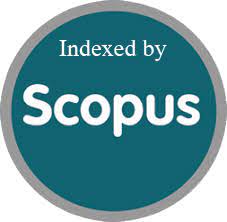Developing a data-driven approach to optimizing pharmacy inventory management
DOI:
https://doi.org/10.52783/jns.v14.1568Keywords:
Pharmacy, inventory, medicine.Abstract
The stock of products, commodities, or other financial resources that are kept or set aside for future production or to satisfy future demand is known as inventory. For example, inventory can include raw materials that are awaiting use in the creation of items, finished goods that are awaiting shipping from the factory, wholesaler, or retailer, and semi-finished or in-process goods that are temporarily held throughout the production process. Equipment, furnishings, fittings, etc. are also included in inventory. Direct and indirect inventories are two categories under which the term inventory can be separated. Items that directly contribute to the manufacturing process and are a necessary component of final goods are included in direct inventories. Raw materials, work-in-progress, and finished commodities are the three categories into which direct inventories can be divided. Items that are required for manufacturing but do not end up in the final product, such as lubricants, grease, oil, gasoline, office supplies, maintenance supplies, etc., are included in indirect inventories. Although there are many reasons why inventories are kept, they generally serve the following fundamental purposes.
Downloads
Metrics
References
Badhan IA, Neeroj MH, Chowdhury I. The Effect Of Ai-Driven Inventory Management Systems On Healthcare Outcomes And Supply Chain Performance: A Data-Driven Analysis. Frontline Marketing, Management and Economics Journal. 2024 Nov 7;4(11):15-52. https://doi.org/10.37547/marketing-fmmej-04-11-03
Galli L, Levato T, Schoen F, Tigli L. Prescriptive analytics for inventory management in health care. Journal of the Operational Research Society. 2021 Oct 3;72(10):2211-24. https://doi.org/10.1080/01605682.2020.1776167
Hakkaraki V. A Bibliometric Analysis of Journal of Scientometric Research Based on Dimensions Database. Indian Journal of Information Sources and Services. 2023;13(1):26-31. https://doi.org/10.51983/ijiss-2023.13.1.3486
Yi WM, Bernstein A, Vest MH, Colmenares EW, Francart S. Role of pharmacy analytics in creating a data-driven culture for frontline management. Hospital Pharmacy. 2021 Oct;56(5):495-500. https://doi.org/10.1177/0018578720920799
Prasad BV, Roopashree HR. Energy Efficient Secure Key Management Scheme for Hierarchical Cluster Based WSN. J. Internet Serv. Inf. Secur.. 2023 May;13(2):146-56. https://doi.org/10.58346/JISIS.2023.I2.009
Karthiayani A, Raman R. IoT-Based Smart Pharmacies for Optimizing Stock Management with Long Short-Term Memory Model. In2024 11th International Conference on Reliability, Infocom Technologies and Optimization (Trends and Future Directions)(ICRITO) 2024 Mar 14 (pp. 1-6). IEEE. https://doi.org/10.1109/ICRITO61523.2024.10522450
Thi QN, Dang TK. Towards Side-Effects-free Database Penetration Testing. J. Wirel. Mob. Networks Ubiquitous Comput. Dependable Appl.. 2010;1(1):72-85.
Contreras NA, Guerrero W, Besiou M. Pharmaceutical Inventory Management Using Industry 4.0 Technologies Based on Collaborative Demand: A System Dynamics Approach.
Stojanovic L, Figun L, Trivan J. Risk management on Medjedja Dam on tailing storage facility, Omarska Mine Prijedor. https://doi.org/10.7251/afts.2020.1222.011S
Aslam MS. Data-driven optimization in pharmacy operations: a prescription for enhanced patient care. Universal Journal of Pharmaceutical Research. 2024. https://doi.org/10.22270/ujpr.v9i6.1239
Sindhu S. The Effects of Interval Uncertainties and Dynamic Analysis of Rotating Systems with Uncertainty. Association Journal of Interdisciplinary Technics in Engineering Mechanics. 2023 Oct 9;1(1):49-54.
Chinnasamy. A blockchain and machine learning integrated hybrid system for drug supply chain management for the smart pharmaceutical industry. Clin J Med Health Pharm. 2024;2(2):29-40.
Fernández MI, Chanfreut P, Jurado I, Maestre JM. A data-based model predictive decision support system for inventory management in hospitals. IEEE journal of biomedical and health informatics. 2020 Nov 20;25(6):2227-36. https://doi.org/10.1109/JBHI.2020.3039692
Carlos M, Escobedo F. A case study-based model for sustainable business management through blockchain technology in small and medium-sized enterprises. Glob Perspect Manag. 2024;2(2):41-50.
Lotfi R, Kargar B, Rajabzadeh M, Hesabi F, Özceylan E. Hybrid fuzzy and data-driven robust optimization for resilience and sustainable health care supply chain with vendor-managed inventory approach. International Journal of Fuzzy Systems. 2022 Mar;24(2):1216-31. https://doi.org/10.1007/s40815-021-01209-4
Rekabi S, Goodarzian F, Garjan HS, Zare F, Muñuzuri J, Ali I. A data-driven mathematical model to design a responsive-sustainable pharmaceutical supply chain network: a Benders decomposition approach. Annals of Operations Research. 2023 Dec 12:1-42. https://doi.org/10.1007/s10479-023-05734-3
Bialas C, Revanoglou A, Manthou V. Improving hospital pharmacy inventory management using data segmentation. American Journal of Health-System Pharmacy. 2020 Mar 1;77(5):371-7. https://doi.org/10.1093/ajhp/zxz264
Hari Krishnan S, Vijay, Sabana Yasmin. Blockchain for health data management. Int Acad J Sci Eng. 2022;9(2):23-27. https://doi.org/10.9756/IAJSE/V9I2/IAJSE0910
Downloads
Published
How to Cite
Issue
Section
License

This work is licensed under a Creative Commons Attribution 4.0 International License.
You are free to:
- Share — copy and redistribute the material in any medium or format
- Adapt — remix, transform, and build upon the material for any purpose, even commercially.
Terms:
- Attribution — You must give appropriate credit, provide a link to the license, and indicate if changes were made. You may do so in any reasonable manner, but not in any way that suggests the licensor endorses you or your use.
- No additional restrictions — You may not apply legal terms or technological measures that legally restrict others from doing anything the license permits.










